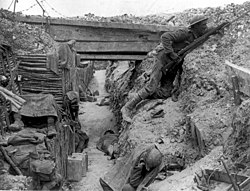User:The wub/Portal
| Highlights | Explore | Get involved |

The United Kingdom of Great Britain and Northern Ireland (usually shortened to the United Kingdom, the UK or - informally - Britain) is a country and sovereign state lying north-west of the continent of Europe. It occupies all of the island of Great Britain and the north-east of the island of Ireland, sharing a border with the Republic of Ireland. The United Kingdom is bounded by the Atlantic Ocean, and its ancillary bodies of water, including the North Sea, the English Channel, the Celtic Sea, St George's Channel, and the Irish Sea. It is linked to France and Continental Europe by the Channel Tunnel.
The United Kingdom is a constitutional monarchy composed of four constituent countries: England, Scotland, Wales and Northern Ireland. The current monarch is Queen Elizabeth II, who is also the Queen and Head of State of fifteen other Commonwealth Realms, including Canada, Australia and New Zealand. The Crown Dependencies of the Channel Islands and the Isle of Man form a federacy with the United Kingdom collectively known as the British Islands. The UK also has fourteen overseas territories, remnants of the British Empire which at its height encompassed a quarter of the world's surface and population.
Although Britain was the foremost great power during the 19th century, and a superpower in the early 20th, the economic cost of two world wars and the decline of its empire in the latter half of the 20th century diminished its status in global affairs. However, as a permanent member of the United Nations Security Council, a nuclear power, a member of the G8, the world's fifth largest economy, and having the third highest defence spending, the UK remains an important political, economic and military world power. It is a member of the European Union and the Commonwealth of Nations.
Featured article
The Hoxne Hoard is the largest hoard of late Roman silver and gold discovered in Britain. Found by a metal detectorist in the village of Hoxne in Suffolk, England, on 16 November 1992, the hoard consists of 14,865 Roman gold, silver and bronze coins from the late fourth and early fifth centuries, and approximately 200 silver tableware and gold jewellery items. The hoard is now on permanent display in the British Museum and is valued at £4.5 million. The coins of the hoard date it after 407 AD, which coincides with the end of Britain as a Roman province. The Hoxne Hoard contains several rare and important objects, including a gold body-chain and silver-gilt pepper-pots. The Hoxne Hoard is also of particular archaeological significance because it was excavated by professional archaeologists with the items largely undisturbed and intact. The find has helped to improve the relationship between metal detectorists and archaeologists, and influenced a change in English law regarding finds of treasure. (Full article...)
Featured biography
John Michael Wright (May 1617 – July 1694) was an English painter, mainly of portraits in the Baroque style. Born and raised in London, Wright trained in Edinburgh under the Scots painter George Jamesone, and sometimes described himself as Scottish in documents. He acquired a considerable reputation as an artist and scholar during a long sojourn in Rome. There he was admitted to the Accademia di San Luca and was associated with some of the leading artists of his generation. He was engaged by Archduke Leopold Wilhelm of Austria, the governor of the Spanish Netherlands, to acquire artworks in Oliver Cromwell's England in 1655.
He took up permanent residence in England from 1656 and served as court painter before and after the English Restoration. A convert to Roman Catholicism, he was a favourite of the restored Stuart court, a client of both Charles II and James II, and was a witness to many of the political manoeuvrings of the era. In the final years of the Stuart monarchy he returned to Rome as part of an embassy to Pope Innocent XI.
After a period of critical neglect, Wright is now rated as one of the leading indigenous British painters of his generation, largely for the distinctive realism in his portraiture. Perhaps due to the unusually cosmopolitan nature of his experience, he was favoured by patrons at the highest level of society in an age in which foreign artists were usually preferred. Wright's paintings of royalty and aristocracy are included amongst the collections of many leading galleries today. (Full article...)
Did you know...
Featured picture

A Cheshire Regiment sentry in a trench near La Boisselle during the Battle of the Somme. The battle is best remembered for its first day, 1 July 1916, on which the British Army suffered 57,470 casualties, including 19,240 dead. With more than one million casualties over five months, it was one of the bloodiest battles in human history. The Allied forces attempted to break through the German lines along a 25-mile (40 km) front north and south of the River Somme.


